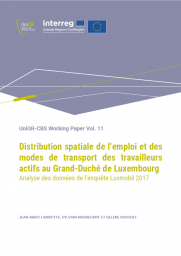Working Paper Vol. 13
Based on a sample of job advertisements published in the main Luxembourgish daily newspaper (Luxemburger Wort) covering the period 1984-2019, this study describes the development of language skills required on the Luxembourg job market. After a brief presentation of the linguistic situation and the labor market in Luxembourg, the statistical analysis of a sample of some 8,340 job advertisements constitutes the main part of this publication. A qualitative study of a smaller body of job vacancies sheds additional light and a detailed understanding of linguistic needs in a multilingual and international labor market. Both approaches come to the same conclusion. The labor shortage and particularly the lack of people fluent in the "three languages of the country" has led to a segmentation of the labor market.


